Tourmaline is a beautiful gem that comes in many colors. Our state is a treasure trove for gem hunters looking for this special stone. With its varied landscapes, this area is perfect for those who love to search for beautiful rocks.
In this guide, we’ll take you on a journey through some of the best spots in our state to find tourmaline. We’ll also share some handy tips to make your hunt more successful.
Get ready to explore the natural beauty of this gem-rich region and maybe even take home a colorful tourmaline of your very own!
How Tourmaline Forms Here
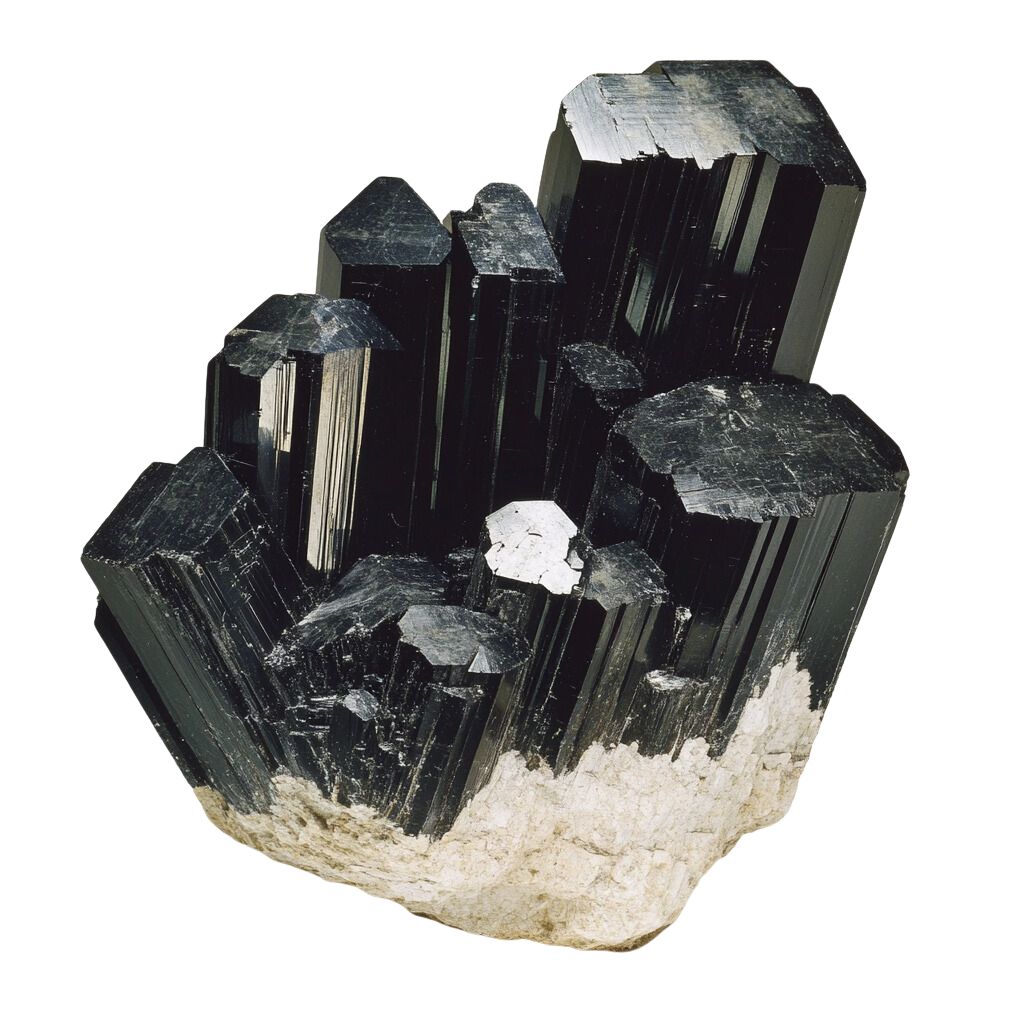
Tourmaline forms deep underground through intense heat and pressure. It originates from hot, mineral-rich fluids that move through fractures in rocks like granite and pegmatite. As these fluids cool, the minerals within them start to crystallize, forming tourmaline.
The color of tourmaline depends on the specific minerals involved, leading to a wide range of hues including pink, red, green, and blue.
Over millions of years, these crystals grow and become the beautiful, multifaceted stones we see today. Tourmaline is prized for its variety of colors and is often used in jewelry and decorative items.
The Types Of Tourmaline
Several incredible types of Tourmaline can be found in the US as well as in our state. Each is uniquely beautiful and interesting including:
Elbaite
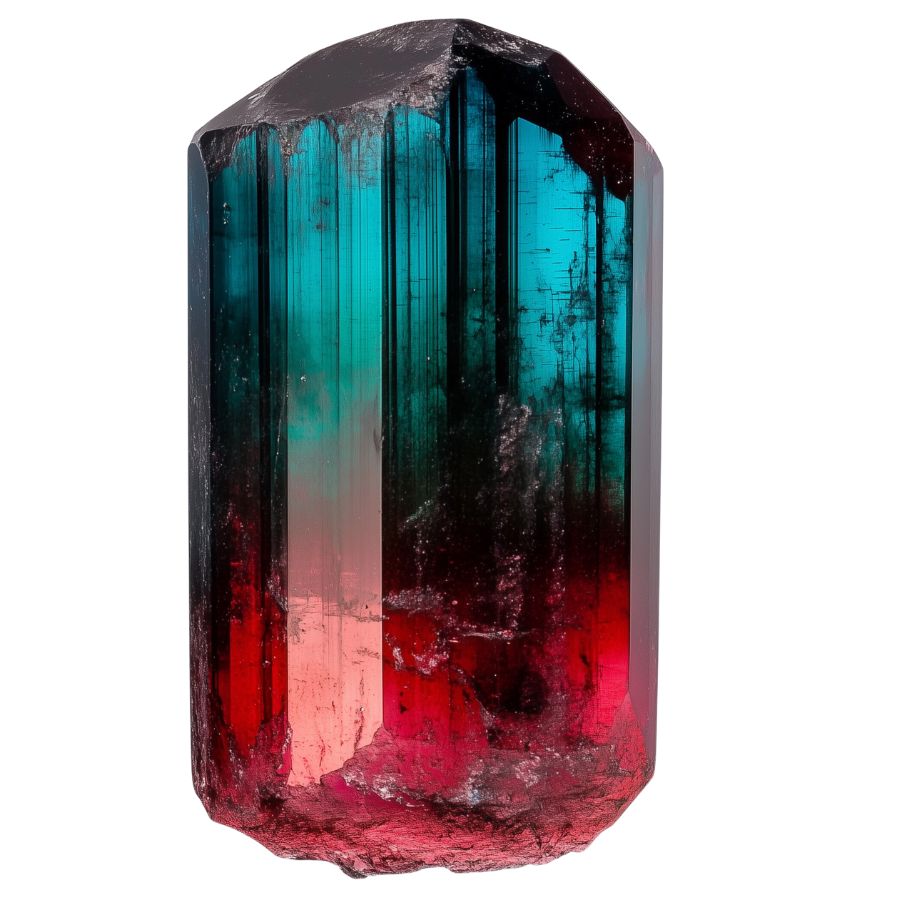
Elbaite is found in pink, red, green, blue, yellow, and even colorless forms. What makes elbaite special is its ability to show multiple colors in a single crystal, like the famous “watermelon” tourmaline with pink and green hues.
This gem stands out due to its complex chemical makeup, which includes lithium, sodium, and aluminum. This composition gives Elbaite its diverse color range and dichroism, allowing it to display different colors when viewed from different angles.
Elbaite has a unique place in history as the first tourmaline variety in which lithium was discovered back in 1818. Some rare types, like the neon blue Paraiba elbaite, are highly sought after by collectors and jewelers.
Schorl
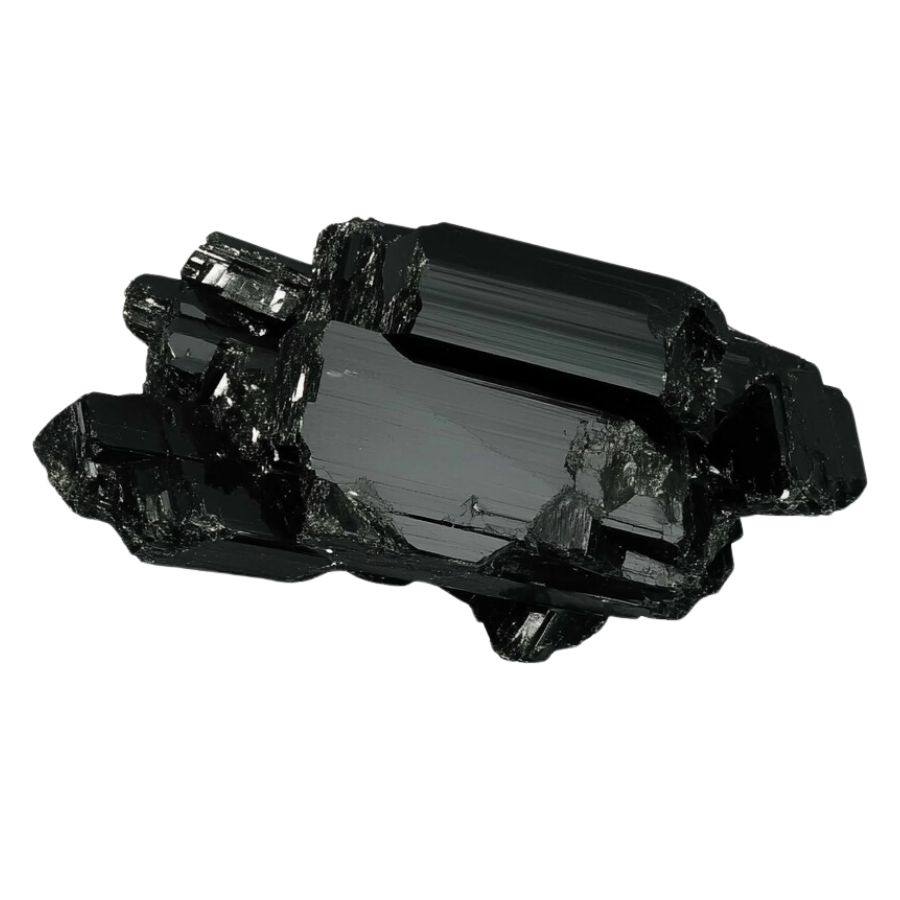
Schorl is known for its deep, rich color. It typically forms long, prismatic crystals with a shiny, glass-like surface when polished. Unlike other tourmalines, schorl gets its distinctive black color from high iron concentrations.
One of Schorl’s most fascinating features is its ability to become electrically charged through heating or rubbing. When charged, it can attract or repel small particles.
This unique electrical property makes Schorl valuable in various industries. It’s used in electronics and manufacturing to control static electricity and electromagnetic interference.
Despite being less colorful than other tourmalines, schorl’s practical applications make it an important and interesting variety.
Rubellite
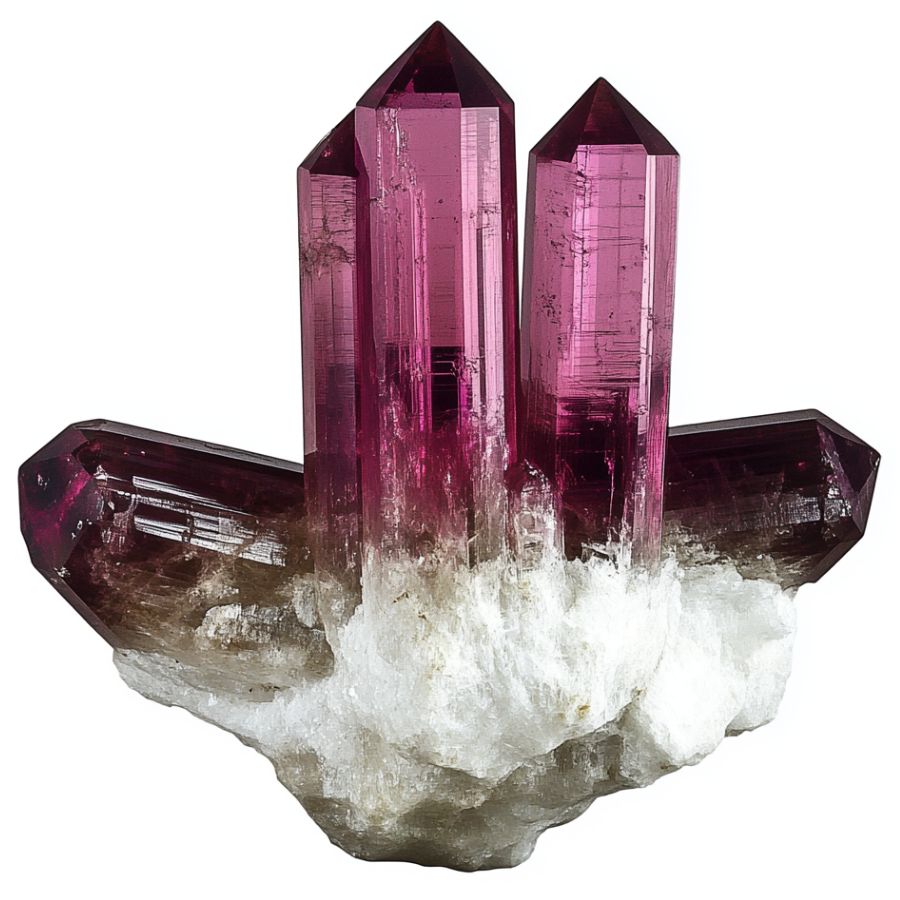
Rubellite stands out with its vibrant pink to red colors. The most prized ones show a pure, saturated red without any brown or orange hints. This beautiful color comes from manganese in its makeup.
One cool thing about rubellite is its double refraction. It can look like it has two different colors when you view it from different angles.
Dravite
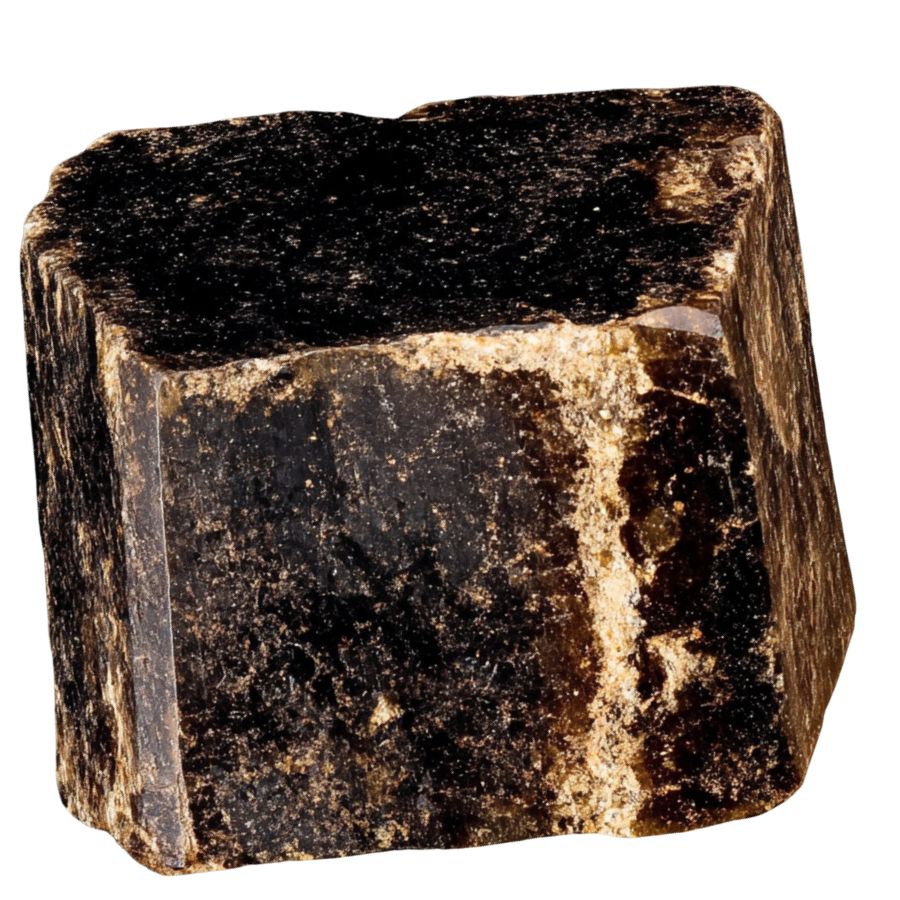
Dravite, or Brown Tourmaline, comes in shades from dark brown to light brown-yellow. It can look a bit like Smoky Quartz, with a semi-see-through quality.
Its crystals are often needle-like or prismatic, with points at both ends. This sets it apart from other tourmalines like the darker schorl or the colorful elbaite.
What makes dravite special is its rich sodium and magnesium content. This sets it apart from other tourmalines. It was first discovered in 1883 and named after the Drava River in Slovenia.
Indicolite
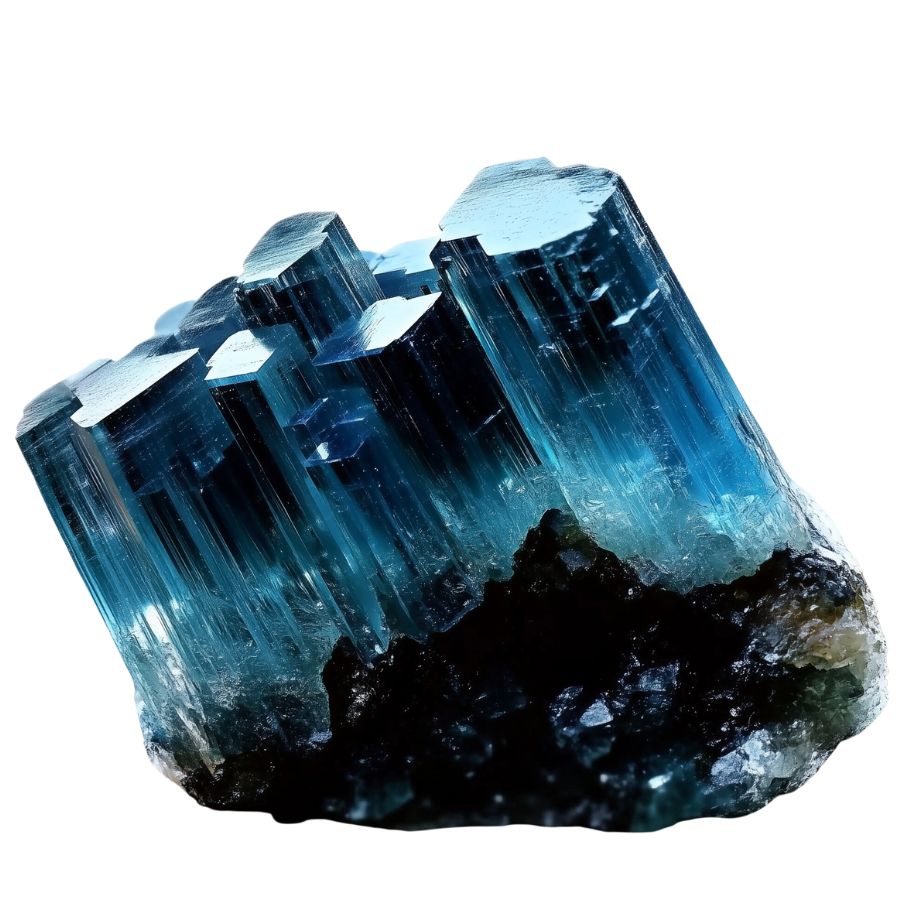
Indicolite is a rare and captivating blue to blue-green stone. It’s prized for its pure, bright blue color, which is considered the rarest within the tourmaline family. The hues can range from light blue-green to deep, rich blue, often with high clarity.
What sets Indicolite apart is its unique optical effects. It shows pleochroism, appearing to change color when viewed from different angles. Some specimens also display chatoyancy, creating a “cat’s eye” effect when cut in a certain way.
Indicolite is sometimes called “Brazilian sapphire” due to its resemblance to the precious gem. However, they’re different minerals.
The increasing demand for blue tourmalines has made indicolite highly sought-after in the gemstone market, appreciated for its beauty and rarity.
Watermelon Tourmaline
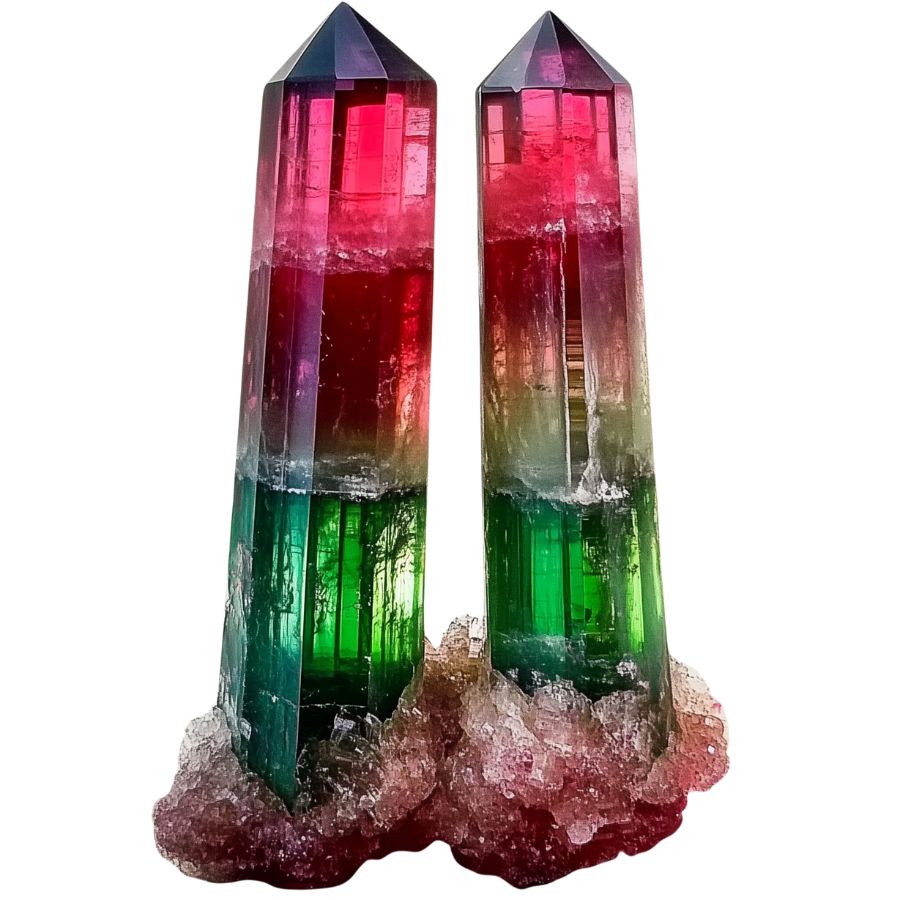
Watermelon tourmaline is truly one-of-a-kind. It looks just like a slice of watermelon, with a pink or red center and a green outer layer. This unique look happens because different elements join the crystal at different times as it grows.
These crystals often form in a rounded triangle shape. They’re see-through to somewhat clear and have a glass-like shine. When cut into slices, they really do look like little watermelons!
Cat’s Eye Tourmaline
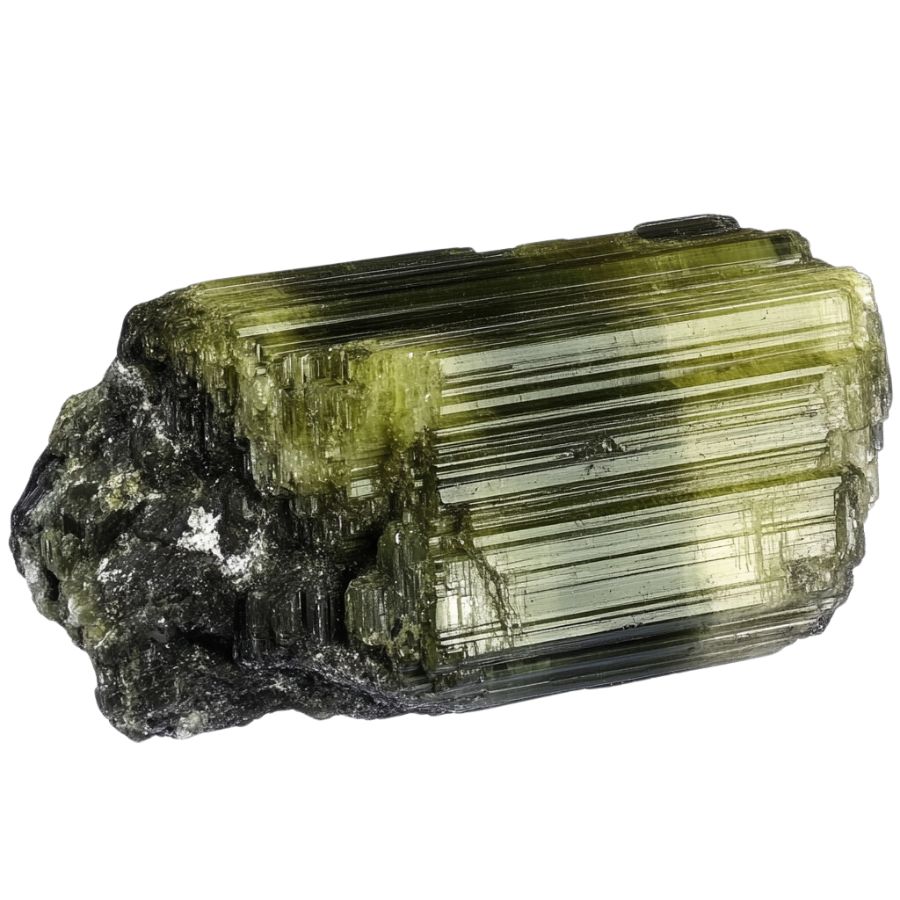
Cat’s eye tourmaline is known for its mesmerizing chatoyancy effect. This creates a bright band across the stone’s surface, resembling a cat’s eye.
This stone comes in various colors, from green to pink to brown, and is usually semi-translucent to opaque.
What makes this stone special is the perfect alignment of tiny, needle-like inclusions inside it. These scatter light in a unique way, creating that eye-catching effect. It’s quite different from other tourmalines that don’t have this feature.
Unlike other cat’s eye stones, Tourmaline offers a wider range of colors and is often more affordable.
Achroite
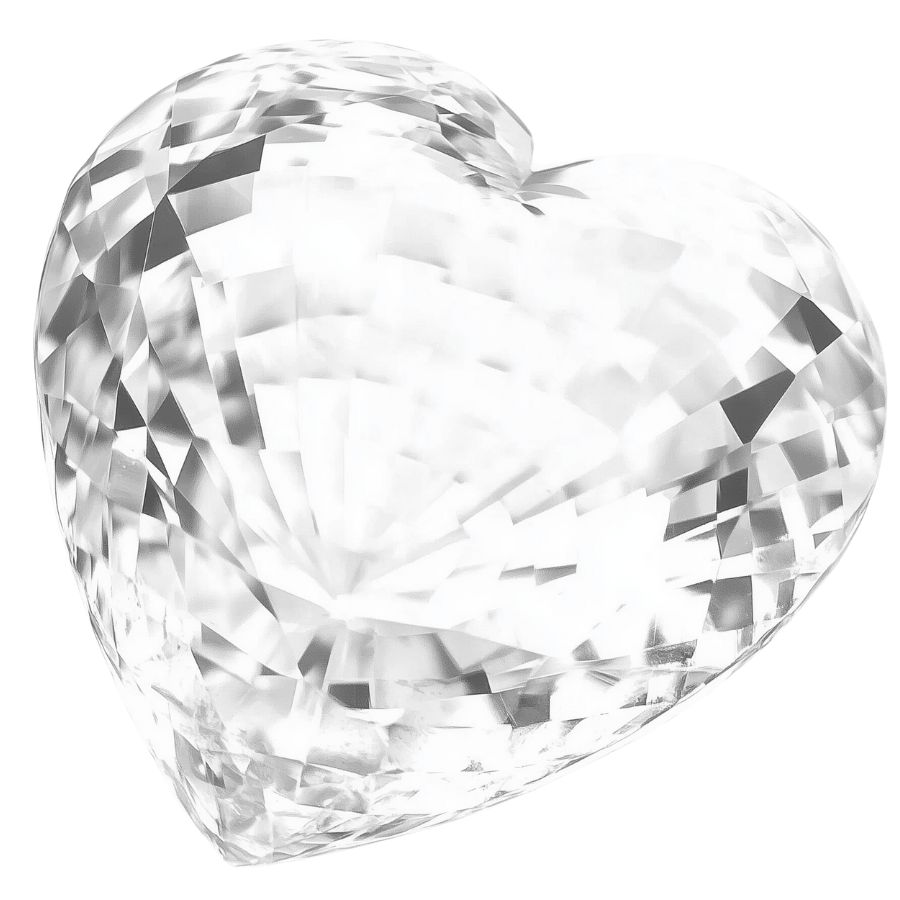
Achroite is a rare, colorless variety of tourmaline that looks like a drop of clear water turned to stone. It’s completely transparent, making it unique among tourmalines which usually have color. The name comes from Greek, meaning “without color.”
What’s special about achroite is that it doesn’t change color when viewed from different angles. It means the stone can be cut in many ways without losing its clarity.
Verdelite
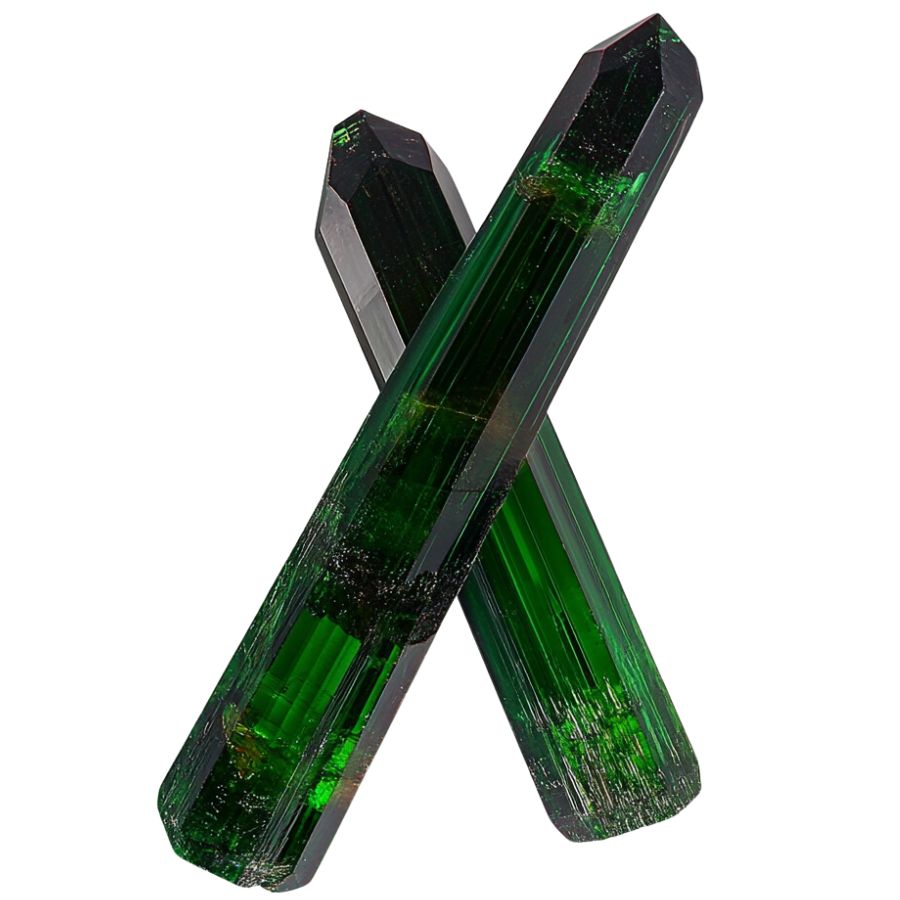
Verdelite is known for its beautiful green color. It can range from light green to deep emerald.
One thing that makes verdelite special is that you can find big, clear crystals of it. This isn’t always easy with other gemstones.
People love using verdelite in jewelry because its rich color and interesting light effects make it a popular choice for all kinds of accessories. Each piece of verdelite is like a little piece of nature you can wear.
Paraíba Tourmaline
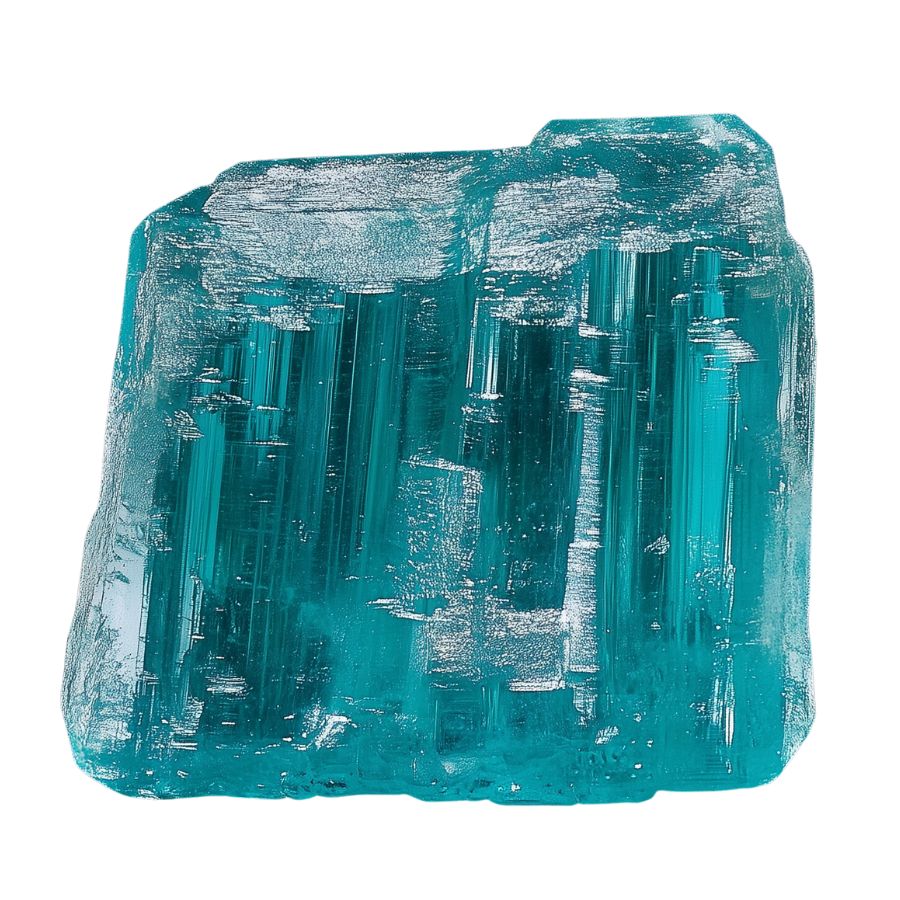
Paraíba Tourmaline is a rare gemstone that catches the eye with its vibrant neon blue or green color. It’s like no other tourmaline you’ve seen before. The intense glow comes from copper in the stone, making it stand out from its cousins.
This stone is one of the rarest. For every 10,000 diamonds mined, only one Paraíba tourmaline is found.
It was only discovered in the late 1980s, making it a newcomer in the gem world. But Paraíba tourmaline’s unique color and rarity quickly made it a favorite among gem lovers.
Its discovery caused quite a stir in the gem community. Even small stones can be valuable because of how rare and beautiful they are.
What Rough Tourmaline Looks Like
When you’re out looking for rough Tourmaline on your own it’s important to know what you’re looking for. Here are some tips to help you recognize rough tourmaline.
Look for Color Variations
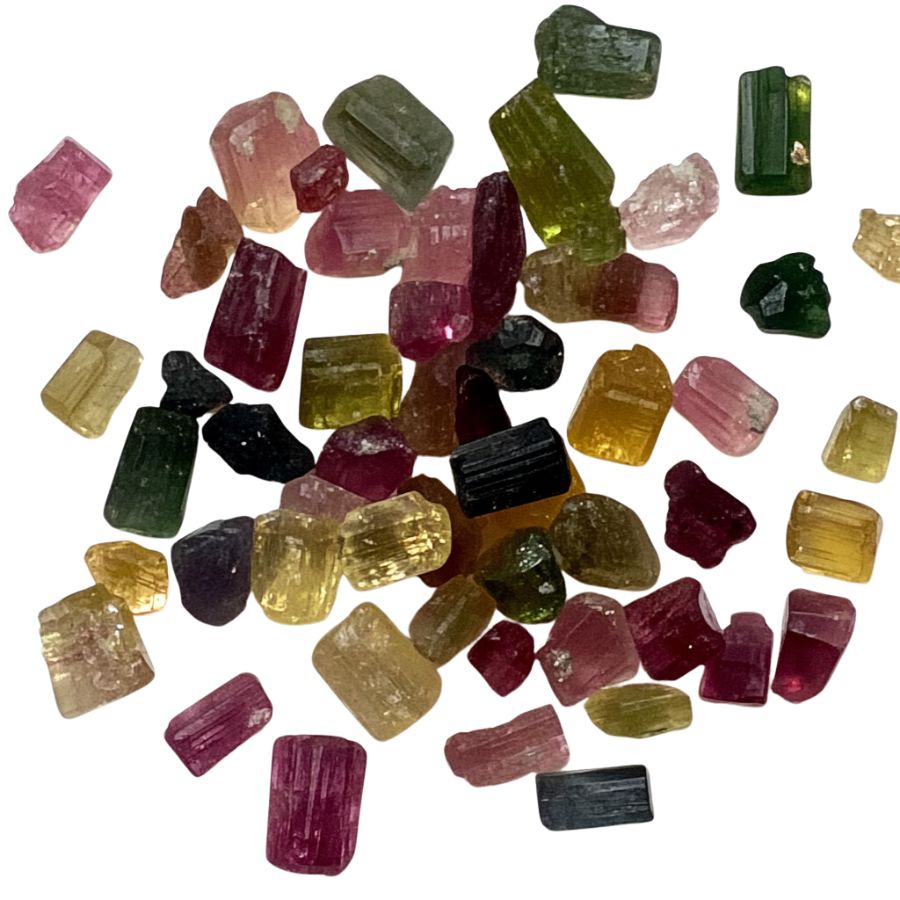
Tourmaline comes in many colors, like pink, green, blue, and even black. Some pieces have multiple colors, like watermelon tourmaline, which is pink and green.
If you see these color mixes, it’s likely tourmaline. Keep an eye out for vibrant shades.
Assess the Density and Weight
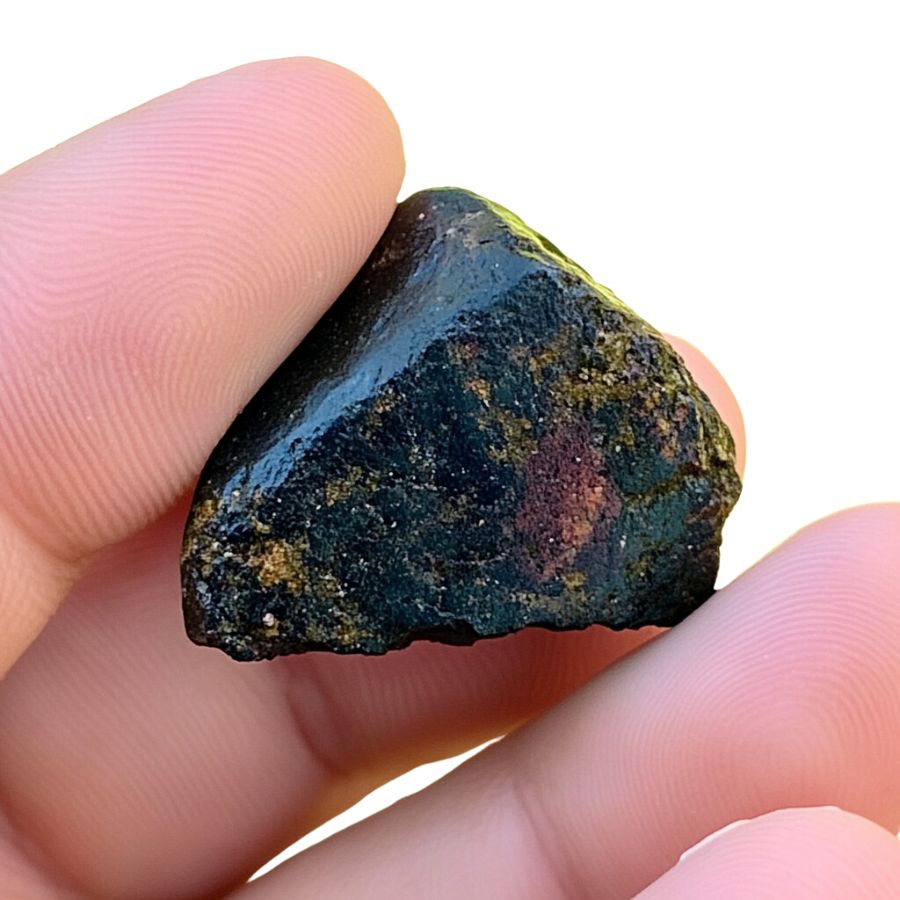
Rough tourmaline is relatively heavy for its size. If you pick up a piece and it feels denser than expected, it could be tourmaline. This weight can help you confirm your find.
Examine the Crystal Structure
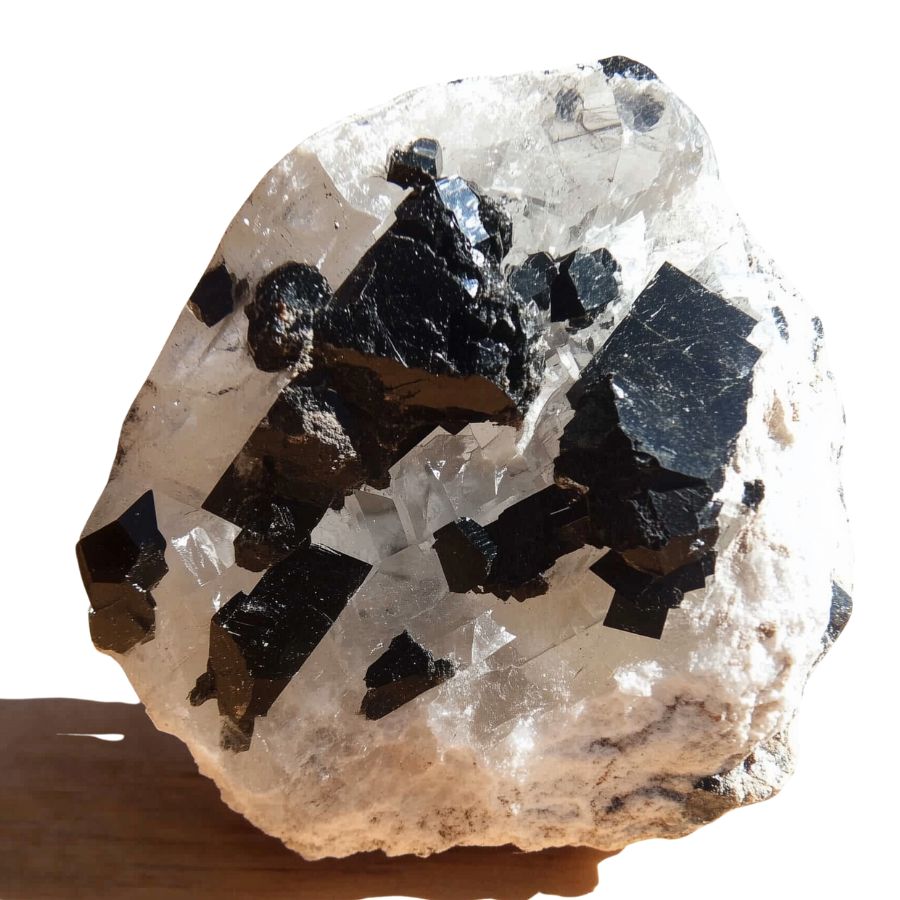
Tourmaline features distinctive crystal shapes, ranging from slender and elongated to chunky forms. Look for triangular cross-sections and striations on the surface, which indicate its unique growth patterns.
Check for Transparency
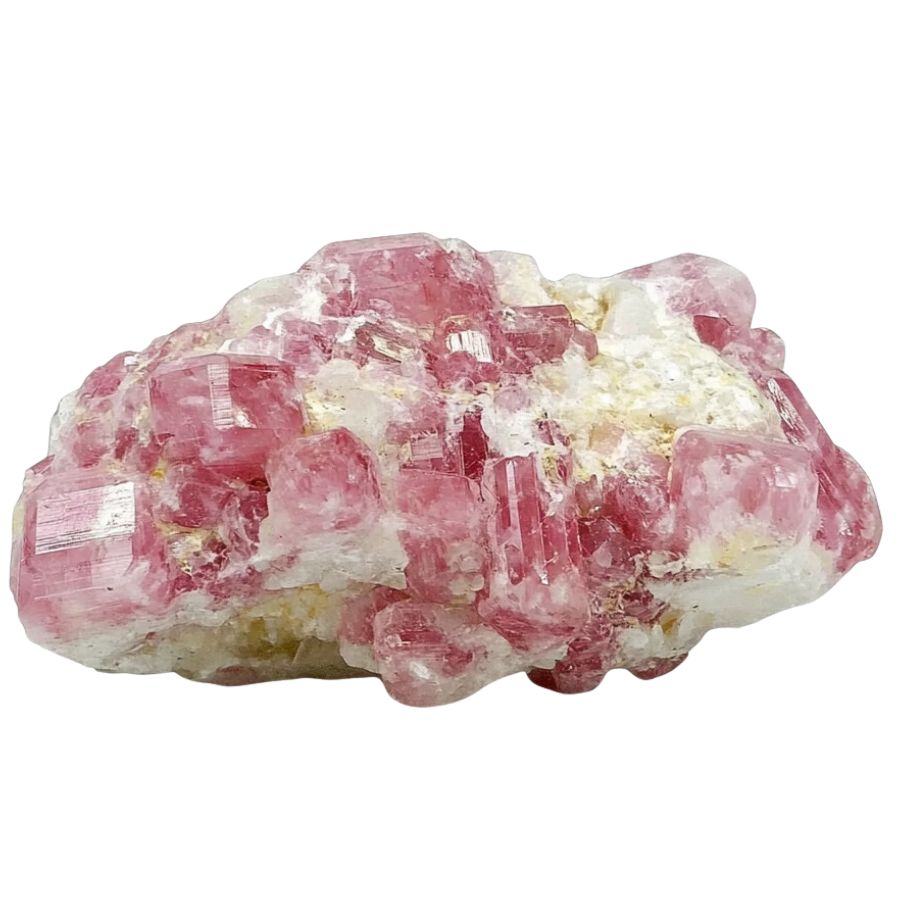
Some rough tourmaline can be slightly transparent. If you hold it up to the light, you might see through it a bit. This transparency can be a good sign that you have tourmaline.
A Quick Request About Collecting
Always Confirm Access and Collection Rules!
Before heading out to any of the locations on our list you need to confirm access requirements and collection rules for both public and private locations directly with the location. We haven’t personally verified every location and the access requirements and collection rules often change without notice.
Many of the locations we mention will not allow collecting but are still great places for those who love to find beautiful rocks and minerals in the wild without keeping them. We also can’t guarantee you will find anything in these locations since they are constantly changing.
Always get updated information directly from the source ahead of time to ensure responsible rockhounding. If you want even more current options it’s always a good idea to contact local rock and mineral clubs and groups
Tips on where to look
Once you get to the places we have listed below there are some things you should keep in mind when you’re searching:
Look for Sedimentary Rocks
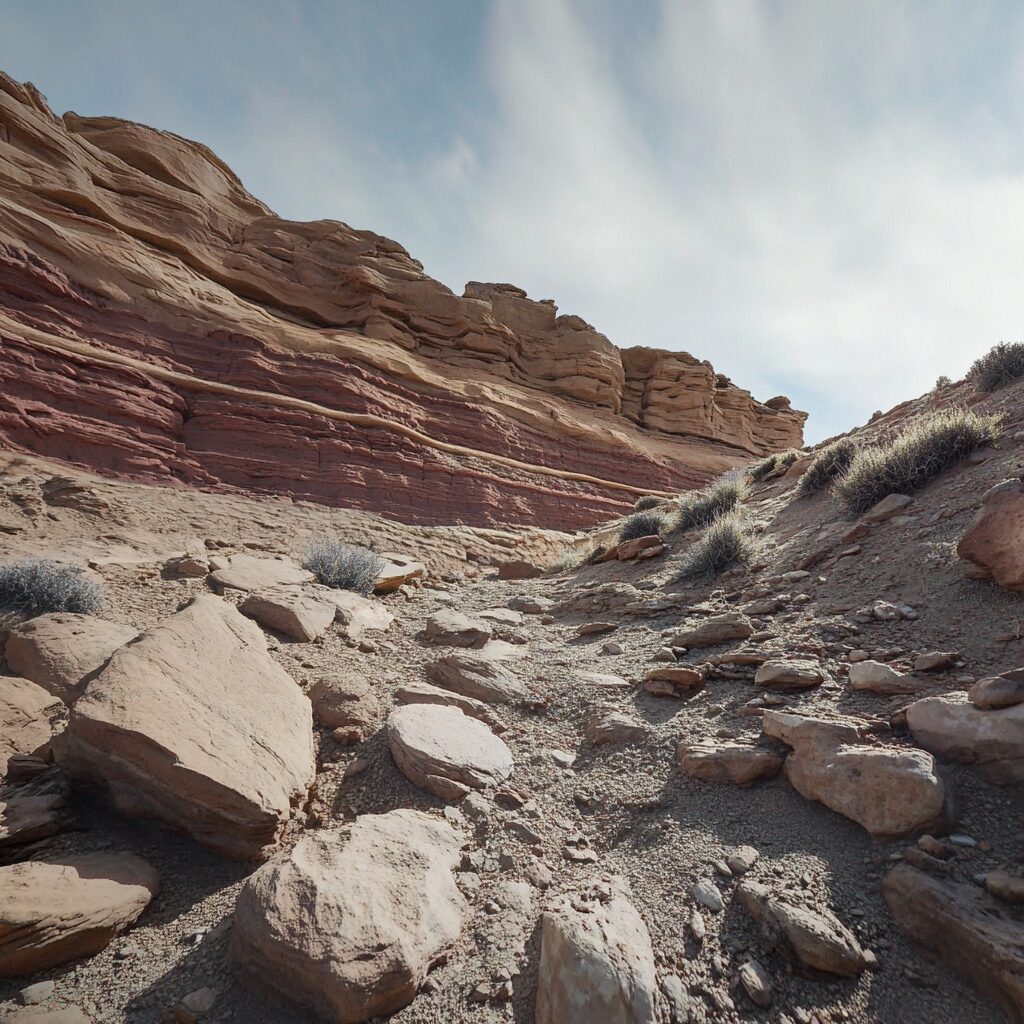
Sedimentary rocks are great places to find tourmaline. These rocks form from layers of sand, mud, and minerals. Over time, minerals like tourmaline can get trapped.
Look in riverbeds or areas where sediment has built up. You might find small pieces or even larger crystals.
Explore Mines
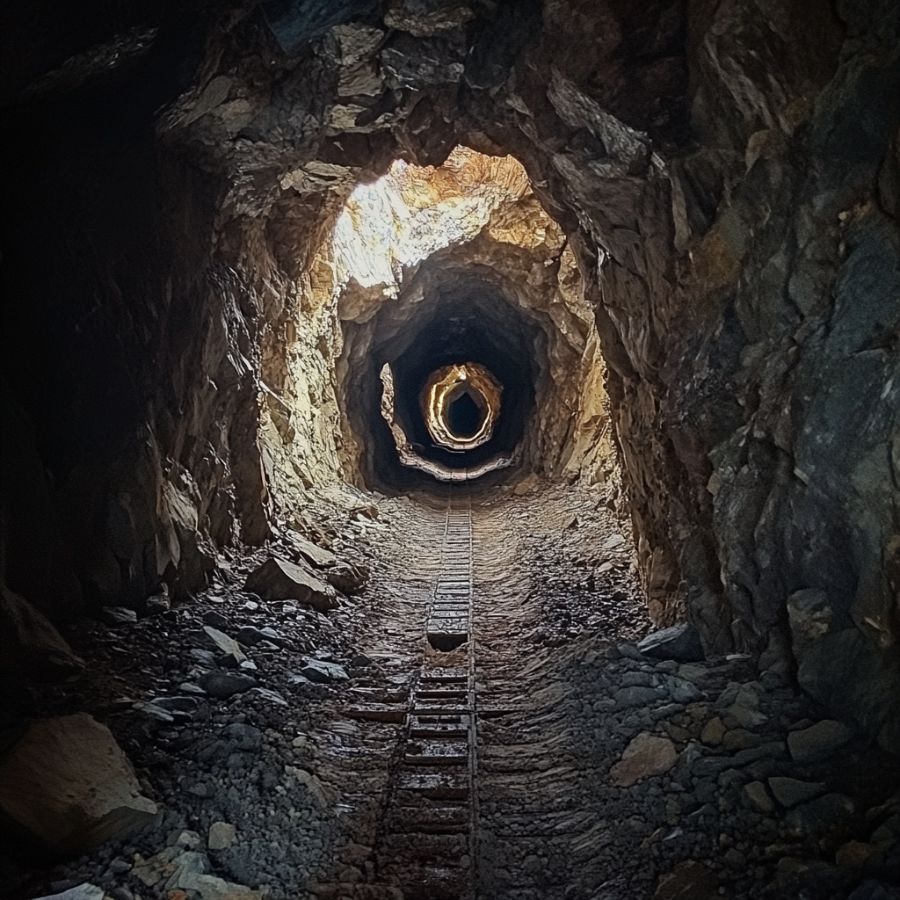
Mines are great spots to find tourmaline. Many mines across the U.S. extract various gemstones, including tourmaline.
Some mines even allow visitors to search for gems themselves. Always check if they have guided tours or special digging days.
Search in Gravel Pits

Gravel pits are often overlooked, but they can be treasure troves. These pits dig deep into the earth, exposing layers of rock.
Tourmaline can be found in the gravel. Just sift through the material carefully.
The types of Tourmaline can you find around the state
This list explores the different types of tourmaline found in South Dakota:
- Indicolite
- Pink tourmaline
- Bicolor tourmaline
- Schorl
- Watermelon tourmaline
- Elbaite
- Buergerite
Some Great Places To Start

Here are some of the better places in the state to start looking:
Custer
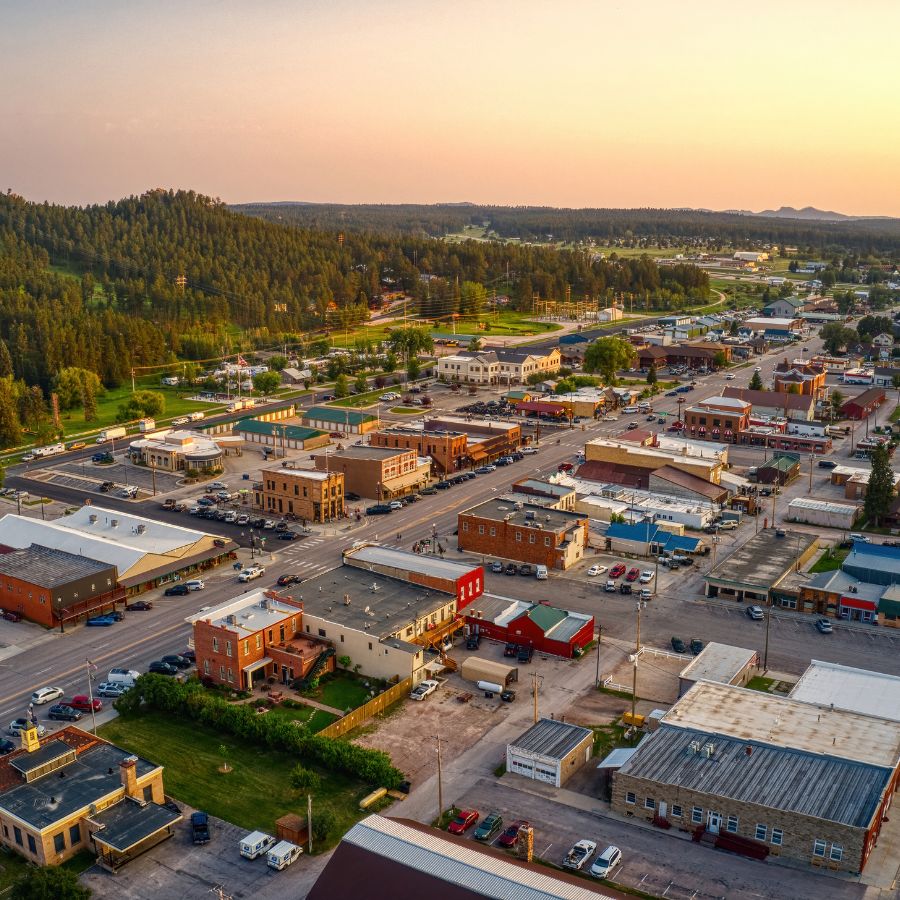
Custer holds the distinction of being the oldest town established by European Americans in the Black Hills, following a gold discovery that kicked off the Black Hills Gold Rush.
Originally named Stonewall, the town was almost deserted after larger gold strikes in nearby Deadwood Gulch but eventually stabilized and grew as a community. Today, while the local economy once relied heavily on mining and a sawmill, it now primarily focuses on tourism and hospitality.
If you’re looking for tourmaline, the mines and pegmatites within the area are great places to check out.
Hill City area
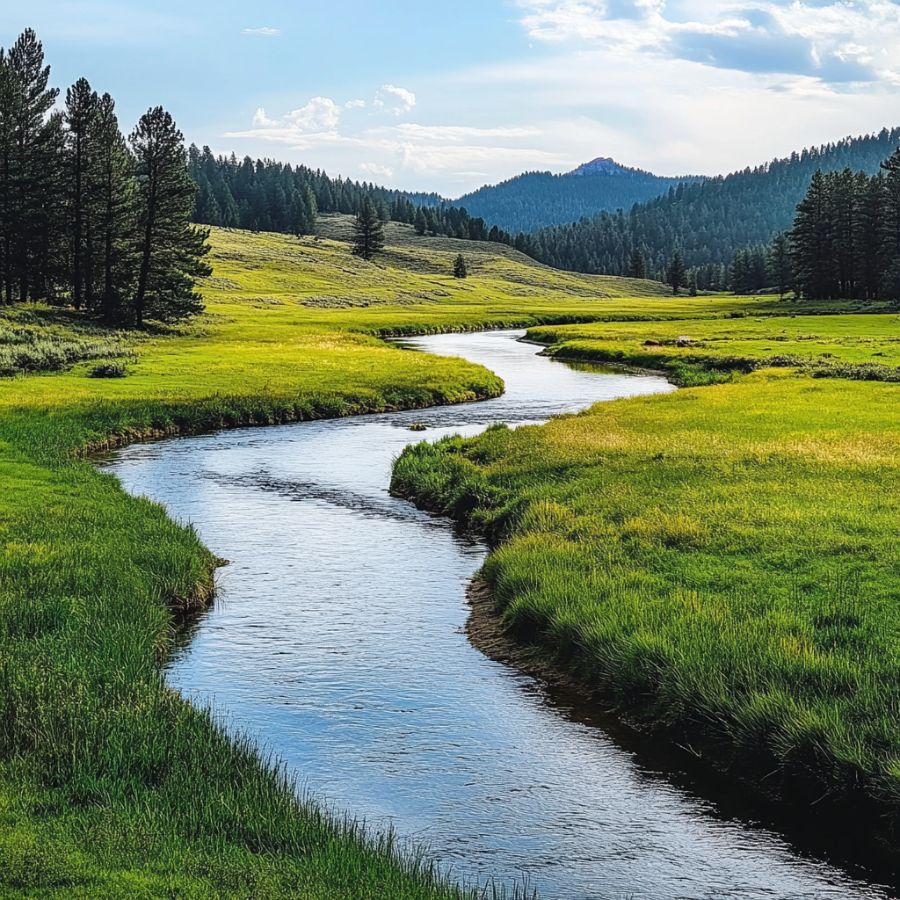
Hill City emerged as one of the first gold rush towns in the Black Hills during 1876, but its initial prosperity was short-lived due to the shift of residents to Deadwood upon hearing of more lucrative gold finds.
Although the tin mining industry waned after 1894, Hill City managed to sustain its economy, transitioning from a mining hub to a cherished tourist destination today.
You can find tourmaline in the various mines, claims, and lodes surrounding the city.
Pringle area

Pringle originated as a relay station on the historic Sidney-Custer Trail, initially managed by Henry Pringle and known as the Point of Rocks Stage Station. This pathway played a critical role during the Black Hills Gold Rush.
The settlement evolved around the stage station and the town was renamed Pringle in 1890 with the arrival of the Chicago, Burlington, and Quincy Railroad.
Aside from its historical significance, the area is also known for its mineral resources, including tourmaline found in the local mines and claims.
Black Elk Peak

Black Elk Peak, previously known as Harney Peak, holds the distinction of being the highest summit east of the Rocky Mountains, reaching an elevation of 7,244 feet.
The peak was historically significant as it hosted a fire lookout tower, initially constructed from wood in 1911. It also featured a unique high-altitude post office operating intermittently between 1936 and 1946.
If you explore the pegmatites in the area, you might just come across some tourmaline!
Keystone

Keystone started as a mining town in 1883 and has developed into a resort town for visitors to the nearby Mount Rushmore National Memorial. The town has preserved its gold rush era origins and even maintained its 19th-century architecture.
There are a lot of things you can explore in Keystone, including local mines where various types of tourmaline, including indicolite and elbaite, have previously been found.
Always Confirm Access and Collection Rules!
Before heading out to any of the locations on our list you need to confirm access requirements and collection rules for both public and private locations directly with the location. We haven’t personally verified every location and the access requirements and collection rules often change without notice.
Many of the locations we mention will not allow collecting but are still great places for those who love to find beautiful rocks and minerals in the wild without keeping them. We also can’t guarantee you will find anything in these locations since they are constantly changing.
Always get updated information directly from the source ahead of time to ensure responsible rockhounding. If you want even more current options it’s always a good idea to contact local rock and mineral clubs and groups
Places Tourmaline has been found by county
| County | Location |
| Custer County | Custer Mining District |
| Custer County | Four Mile |
| Custer County | Ruby Creek pegmatites |
| Custer County | Eureka Lode Prospect |
| Custer County | Ruberta Mining and Milling Company Mine |
| Custer County | Custer County area mines |
| Lawrence County | Tinton Pegmatite Mining District |
| Pennington County | Blue Ox Mine |
| Pennington County | Iron Creek Bridge |
| Pennington County | Oreville Mining District |
| Pennington County | Pennington County area mines |


